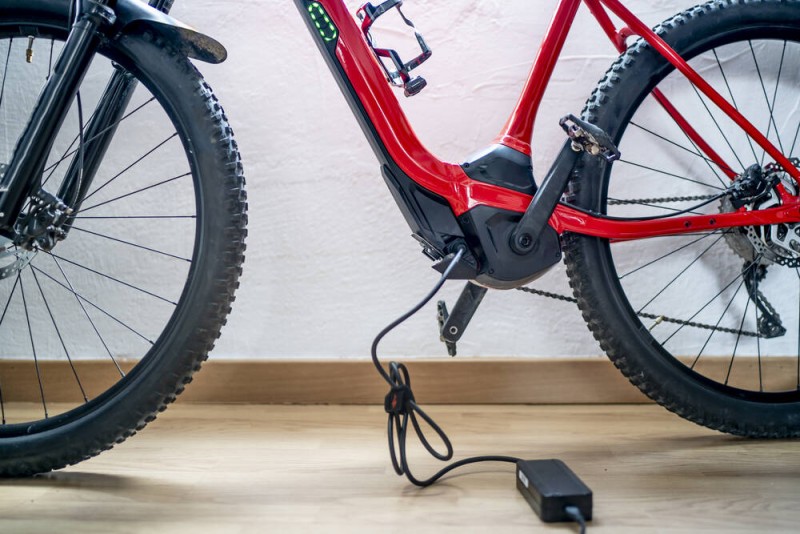
E-bikes have gained popularity for their eco-friendly transportation solution, powered by rechargeable lithium-ion batteries (Li-ion). These batteries are known for their high energy density and efficiency, making them ideal for powering electric vehicles like e-bikes. However, despite their benefits, Li-ion batteries also come with potential risks, particularly related to fire hazards.
While Li-ion batteries are generally safe when handled correctly, they can pose fire risks under certain conditions. The primary factors contributing to these risks include overheating, short circuits, manufacturing defects, and improper handling.
Understanding the causes of e-bike fires is crucial for preventing potential accidents and ensuring user safety.
One of the common causes of e-bike battery fires is using improper charging equipment or methods. Using chargers not approved by the manufacturer or leaving batteries charging unattended for extended periods can lead to overheating and subsequent fire hazards. Li-ion batteries are designed to be charged with specific chargers that regulate voltage and current flow to prevent overcharging, which can cause overheating and lead to thermal runaway—a chain reaction within the battery that can result in fire.
Physical damage to the battery pack is another significant risk factor. E-bike batteries are typically housed in protective casings, but impacts from accidents or improper handling can cause structural damage. A compromised casing can expose the internal cells, making them vulnerable to short circuits and thermal events that could ignite the battery contents.
To minimize the risk of e-bike fires, regular maintenance and adherence to safety guidelines are essential practices for e-bike owners.
Regularly inspecting the battery for any signs of damage is crucial. Look for dents, scratches, or bulges in the battery casing, as these could indicate underlying issues. If any damage is found, it's important to have the battery inspected by a professional and possibly replaced to prevent further risks.
Always use the charger provided by the e-bike manufacturer. Chargers are designed specifically for the battery's voltage and current requirements. Using a charger that is not compatible or approved can lead to overcharging, overheating, and ultimately, a fire hazard. When charging, ensure the connection is secure and avoid leaving the battery charging unattended for extended periods.
Proper charging habits are critical to maintaining battery safety and longevity.
It's recommended to charge e-bike batteries in well-ventilated areas. This helps dissipate any heat generated during charging and reduces the risk of overheating. Avoid charging in enclosed spaces or near flammable materials to prevent potential fire hazards.
Overcharging is a common issue that can lead to battery overheating and, in extreme cases, fires. Modern e-bike chargers typically have built-in mechanisms to prevent overcharging by automatically cutting off the power supply once the battery reaches full capacity. It's important to follow the manufacturer's recommendations regarding charging times and practices to avoid overcharging.
Proper storage and usage habits play a crucial role in ensuring e-bike safety and preventing potential fire incidents.
Temperature extremes can impact battery performance and safety. Avoid exposing the battery to direct sunlight or extreme heat, as this can accelerate chemical reactions within the battery cells. Similarly, storing batteries in excessively cold temperatures can reduce their efficiency and capacity. Ideally, store e-bike batteries in a cool, dry place at room temperature when not in use.
Ensure that the battery is securely mounted on the e-bike frame according to the manufacturer's guidelines. Secure mounting helps prevent vibrations or impacts that could potentially damage the battery casing or internal components. Periodically check the mounting to ensure it remains secure and stable during use.
In the event of a fire-related incident involving an e-bike battery, knowing how to respond promptly and effectively can mitigate risks and minimize damage.
Keep a fire extinguisher rated for electrical fires readily accessible in areas where e-bike batteries are charged or stored. Electrical fires require specific extinguishing agents designed to safely suppress fires involving energized electrical equipment.
If a fire occurs, prioritize personal safety and evacuate the area immediately. If possible, disconnect the battery from the e-bike to halt the power supply. Contact emergency services promptly to report the fire and seek professional assistance in extinguishing the fire safely.
Staying informed about e-bike battery safety and maintenance practices is crucial for all e-bike owners.
Refer to the manufacturer's user manual and guidelines for specific instructions on e-bike battery care, maintenance procedures, and safety precautions. Manufacturers often provide detailed information on charging practices, storage recommendations, and signs of battery degradation that users should be aware of.
Engage with online e-bike user communities and forums to share experiences, learn from others' insights, and stay updated on the latest safety recommendations and technological advancements. These platforms can provide valuable peer support and expert advice on maintaining e-bike batteries safely. E-bikes offer a convenient and environmentally friendly mode of transportation powered by advanced lithium-ion battery technology. However, ensuring e-bike safety requires proactive measures to prevent potential fire hazards associated with battery use. By following recommended safety practices, including proper charging techniques, regular maintenance checks, and emergency preparedness, e-bike owners can enjoy the benefits of their vehicles safely and confidently.
What is'Kavach? Indian Railways Floats Tender for 10,000 km of 'Kavach' System, Details Here
Great opportunity to buy Tata Nexon this month, get a discount of Rs 1 lakh
Read the review of Mahindra Scorpio N Z8 Select Automatic, best deal at price!